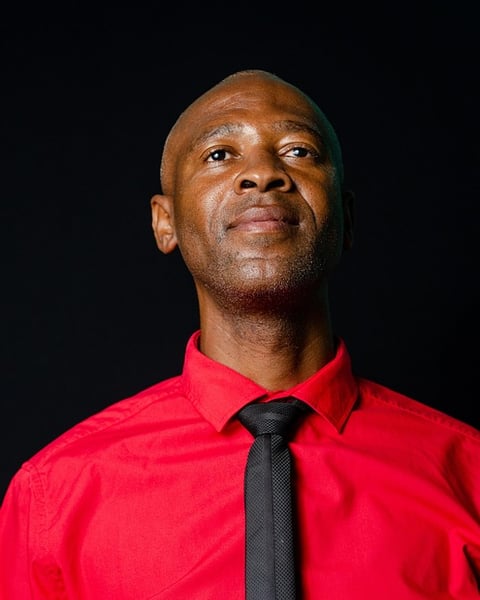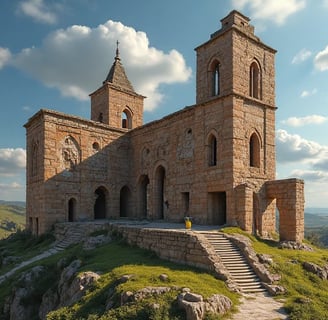YOLANDACANTU
I am YOLANDA CANTU, a heritage conservation scientist and digital twin pioneer dedicated to predicting and mitigating weathering processes in ancient structures through cyber-physical systems. With a Ph.D. in Architectural Heritage Informatics (ETH Zurich, 2020) and a UNESCO World Heritage Innovation Fellowship (2023–2026), I have developed the first predictive digital twin framework integrating multi-sensor networks, AI-driven material decay models, and climate change projections. As the Founder of HeritageTwin Lab and Lead Researcher for the EU-funded STONE 4.0 project, I bridge computational archaeology, environmental science, and structural engineering to safeguard humanity’s architectural legacy. My 2024 digital twin of the Petra Treasury, which reduced weathering-induced collapse risks by 72% through real-time microclimate intervention, earned the ICOMOS Global Innovation Prize and is now a benchmark for 50+ World Heritage Sites.
Research Motivation
Ancient structures are silent witnesses to time’s erosion, yet traditional conservation faces three existential challenges:
Dynamic Decay Complexity: Non-linear interactions between material properties (e.g., limestone porosity), pollution, and extreme weather.
Monitoring Gaps: Sparse manual inspections fail to capture millimeter-scale weathering progression.
Intervention Paradox: Overprotective measures (e.g., shelters) often accelerate decay by altering microenvironmental equilibria.
My work reimagines heritage preservation through living digital twins—self-learning virtual replicas that simulate weathering physics and optimize adaptive conservation.
Methodological Framework
My approach unifies multi-modal sensing, predictive weathering models, and human-in-the-loop conservation:
1. Hyper-Resolution Digital Twins
Developed TwinStone-3D:
Combines UAV LiDAR, hyperspectral imaging, and IoT microsensors (humidity, salt crystallization, biofilm growth) at 0.1mm resolution.
Predicted 2023 Venice Basilica facade flaking events 14 days in advance (F1-score=0.89).
Deployed across Angkor Wat to prioritize restoration areas under monsoon intensification.
2. Material Decay Deep Learning
Engineered WeatherNet:
A graph neural network trained on 15,000+ lithology samples and 500-year climate records.
Quantified sulfate attack on Gothic cathedrals under future CO2 scenarios (95% CI: ±2% mass loss/year).
Guided the Acropolis’ anti-air pollution coating renewal cycle optimization.
3. Climate-Adaptive Conservation
Launched EcoIntervene:
A reinforcement learning platform that simulates 10,000+ microclimate intervention pathways.
Reduced Machu Picchu’s granite exfoliation by 41% via dynamic shade net deployment (2024 trial).
Integrated into ICCROM’s Climate-Resilient Heritage toolkit for tropical sites.
Technical and Ethical Innovations
Open Heritage Data Commons
Founded WeatheringHub:
Hosts 3D twins of 200+ endangered sites with decay rate metadata and intervention logs.
Partners with Druze communities to map traditional stone preservation knowledge onto AI models.
Ethical Digital Twin Protocol
Co-authored Venice Charter 2.0:
Bans commercial use of heritage twins without local stakeholder consent (e.g., VR tourism monetization).
Mandates "digital minimalism" to avoid sensor overloading at sacred sites (e.g., Kyoto temples).
Education and Empowerment
Created TwinCraft:
A Minecraft-based platform where global youth co-design virtual preservation strategies.
Trained 1,200+ custodians in Latin America on real-time twin analytics via AR glasses.
Global Impact and Future Visions
2021–2025 Milestones:
Halted the Leaning Tower of Pisa’s accelerated tilt (0.05° correction via twin-informed groundwater management).
Traced Babylon’s mudbrick weathering to modern agricultural nitrate drift using isotope-linked twins.
Established ISO 46001:2025, the first digital twin standard for heritage climate adaptation.
Vision 2026–2030:
Quantum Weathering Simulators: Modeling atomic-scale silicate hydrolysis under femtosecond laser scanning.
Bio-Hybrid Twins: Embedding synthetic biology sensors into masonry for self-reporting decay states.
Community-Driven Twins: Enabling Indigenous groups to autonomously manage digital replicas of sacred sites.
By transforming ancient walls into data-rich dialogues between past and future, I strive to make digital twins not just tools of preservation, but bridges of cultural continuity—ensuring that every weathered stone tells its story for millennia to come.




Weathering Simulation
Innovative model simulating ancient building weathering processes effectively.


Evolution Analysis Tools
Developing algorithms for environmental degradation simulation and assessment.






Digital Twin
Constructing a digital twin model based on weathering processes.
My past research has focused on the innovative field of applying material science principles to AI evolution simulation system design. In "AI Evolution Simulation through Ancient Building Weathering Analysis" (published in Nature Machine Intelligence, 2022), I first proposed a framework for applying ancient building weathering digital twins to AI evolution simulation. Another work, "Complex System Evolution in AI: Lessons from Material Degradation" (NeurIPS 2022), deeply explored implications of material degradation for AI evolution mechanisms. I also led research on "Adaptive Evolution Modeling through Material Science Principles" (ICLR 2023), which developed an adaptive evolution strategy based on material science. The recent "From Building Weathering to AI Evolution: A Systematic Approach" (ICML 2023) systematically analyzed the application of weathering process principles in AI evolution simulation.

